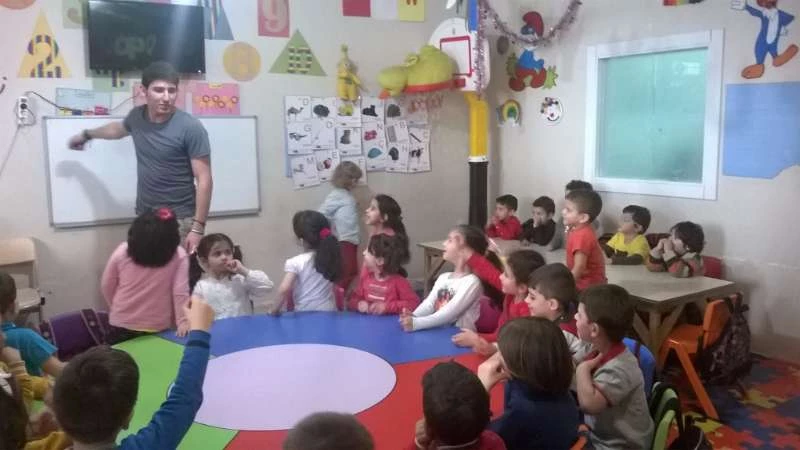Gregory says that his experience in working with victims of trauma began with his own need to find healing as well as his desire to help other young war veterans in the US who were suffering from post-traumatic stress disorder.
He also says that government programs that try to help are not as effective as those programs that are developed by the veterans themselves.
Ultimately, “One has to heal oneself,” said Gregory.
The special tools that Gregory is now using to help Syrian youth heal from the effects of the trauma they brought with them from Syria are tools he helped to develop after listening to hundreds of veteran’s stories back home in San Francisco.
“We started with photography, then moved on to murals and having them tell their stories in them and then we moved on to journaling and writing their stories because the work is about healing,” said Gregory. “In my view the first victim of war is the children --- and the second victim is the soldiers. Young soldiers pushed by their country towards this war.”
In spite of the fact that the US has done an abysmal job in resettling Syrian refugees, there is a strong link between Amos’ healing projects in the US and Turkey.
Gregory recalled how even though they had gotten permission from the Turkish Ministry of Education and the school administrator, his plan to do a butterfly mural one evening in 2015 at a school in Hatay fell apart when the Turkish police showed up and shut the large group of volunteer artists down.
“I’m a street artist. The police always shut you down,” said Gregory with a smile.
With the help of three homeless young people in San Francisco, Gregory switched gears and painted the mural in San Francisco’s Veteran’s Alley after returning to California instead.
The main butterfly in the mural represents Syria. The tear down the middle of its body represents the war. The small butterflies that surround it represent the refugees that have flown out of the wound; and each of them is painted to represent the countries that have been accepting Syrian refugees.
Gregory says that he deliberately left out the US because of the moral failure of today’s Americans towards Syria’s refugees.
“It is the UNHCR that requests that each member state accept a certain amount of refugees during any international crisis,” Gregory explained. “Traditionally America has taken in half of the amount recommended by the United Nation’s High Commissioner for Refugees.”
The UNHCR recommended that the US take in 128,000 Syrian refugees. Yet, instead of the 64,000 that would have been America’s traditional response in the past, as of last year they had only taken in about 2,500.
The largest of the small butterflies in the Veteran’s Alley mural represents Turkey which has done more to help Syrians than any other country.
One of the things Gregory hopes that the butterfly mural will do is to shame all of the countries that have refused to accept Syrian refugees --- as well as those Americans who have forgotten that their ancestors had come to America as refugees from Europe as well.
Meanwhile back in Turkey, Gregory and his crew of young volunteers are busy creating some pretty brainy murals on the wall of their largest school partner to date.
Mulham Mardeny, a 21 year-old from Damascus, has been working as Gregory’s apprentice since meeting him in Istanbul.
It was Mardeny who called Gregory in California to tell him about the school of approximately 1500 Syrian and Turkish children that was interested in participating in the healing art project.
Working on the murals together has given Syrian and Turkish students a sense of unity and commonality, which in turn has helped them to develop relationships.
Bonding with their Turkish peers will help Syrian children who are now growing up in Turkey to assimilate into Turkish society.
Gregory is hoping his healing art project will leave a legacy that will be multi-generational.
When asked if the language barrier was an obstacle Gregory replied, “I never go anywhere where I’m not invited.”
“There is always an advocate, a Syrian activist who sees the value of what I am doing. They translate as well as learn from me so that they can carry on after I am gone.”
“It is so much more powerful coming from Syrians,” said Gregory. “This is their story.”
Gregory says he tries to avoid talking about politics with the children, but admits that when they ask him questions he answers them honestly.
When asked how it makes him feel to work with the children, Gregory’s answer was also honest and to the point:
“My answer is one word,” he said. “HOPE.”



التعليقات (0)